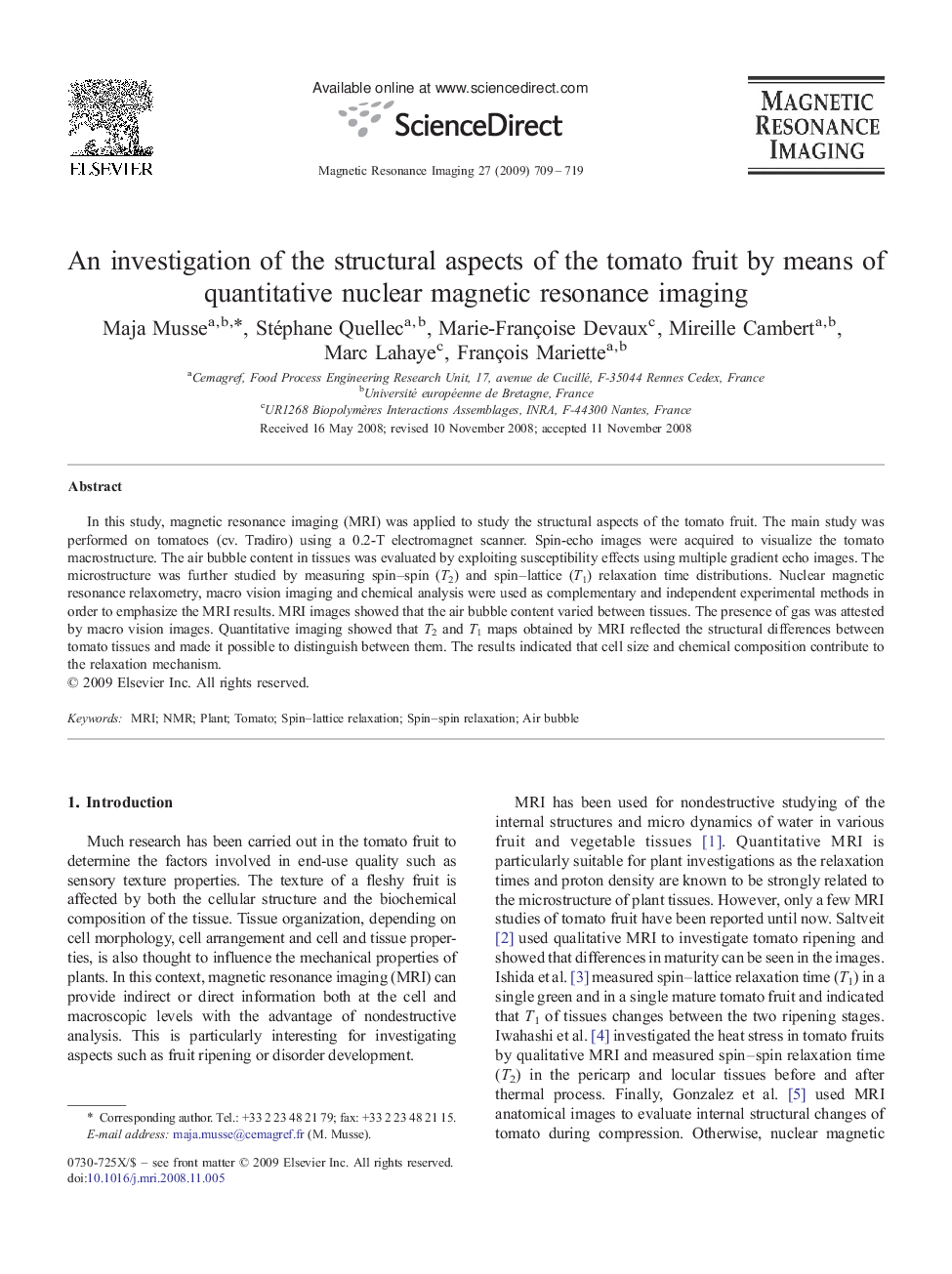| Article ID | Journal | Published Year | Pages | File Type |
|---|---|---|---|---|
| 1807371 | Magnetic Resonance Imaging | 2009 | 11 Pages |
Abstract
In this study, magnetic resonance imaging (MRI) was applied to study the structural aspects of the tomato fruit. The main study was performed on tomatoes (cv. Tradiro) using a 0.2-T electromagnet scanner. Spin-echo images were acquired to visualize the tomato macrostructure. The air bubble content in tissues was evaluated by exploiting susceptibility effects using multiple gradient echo images. The microstructure was further studied by measuring spin-spin (T2) and spin-lattice (T1) relaxation time distributions. Nuclear magnetic resonance relaxometry, macro vision imaging and chemical analysis were used as complementary and independent experimental methods in order to emphasize the MRI results. MRI images showed that the air bubble content varied between tissues. The presence of gas was attested by macro vision images. Quantitative imaging showed that T2 and T1 maps obtained by MRI reflected the structural differences between tomato tissues and made it possible to distinguish between them. The results indicated that cell size and chemical composition contribute to the relaxation mechanism.
Related Topics
Physical Sciences and Engineering
Physics and Astronomy
Condensed Matter Physics
Authors
Maja Musse, Stéphane Quellec, Marie-Françoise Devaux, Mireille Cambert, Marc Lahaye, François Mariette,
